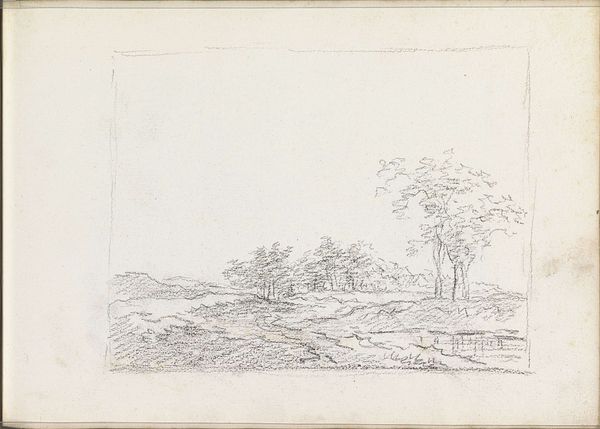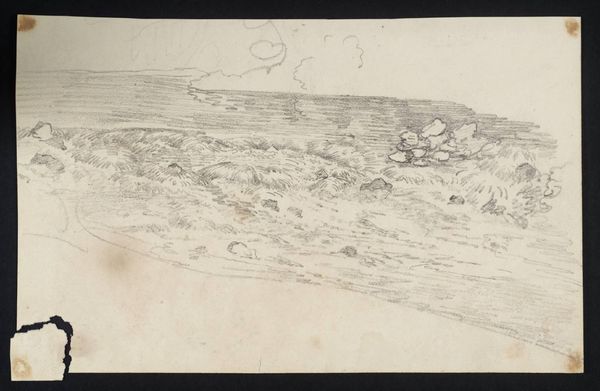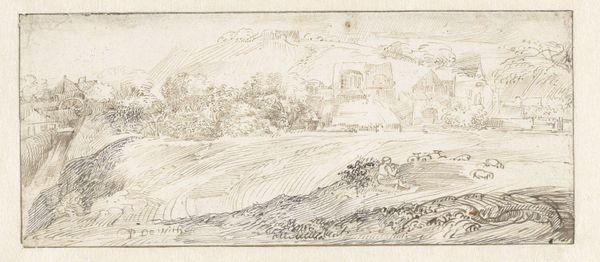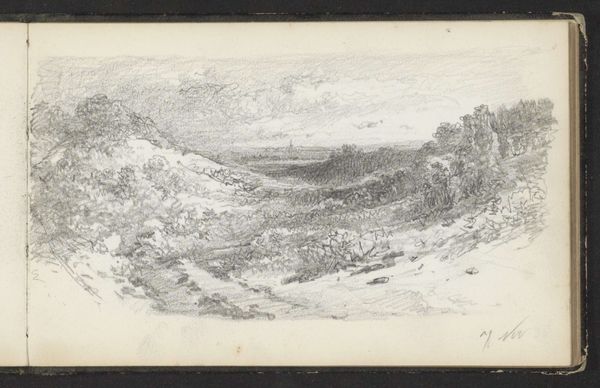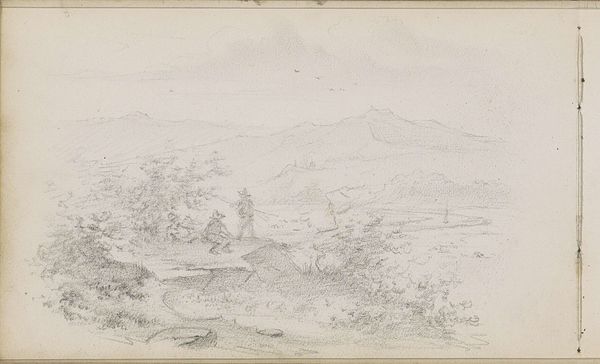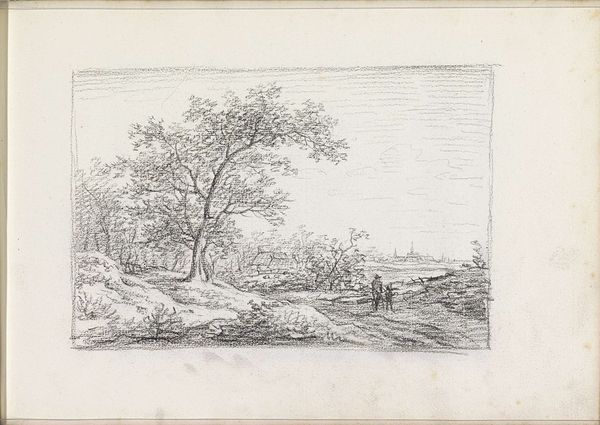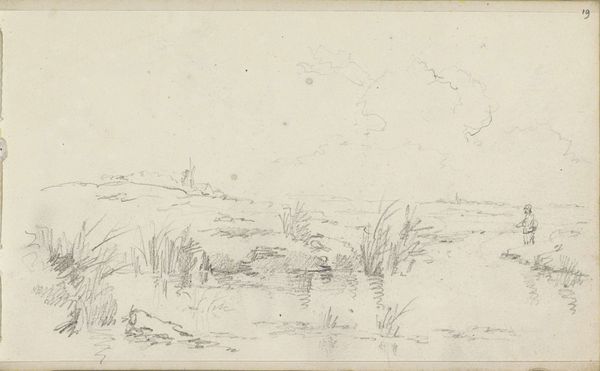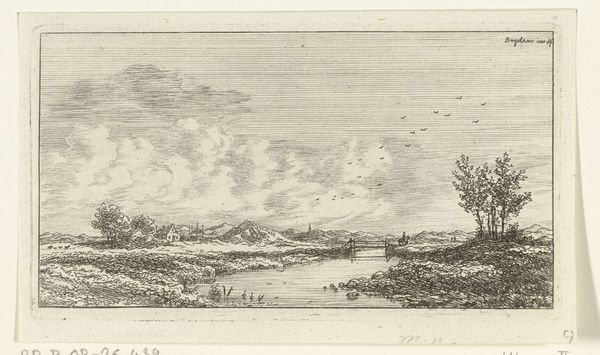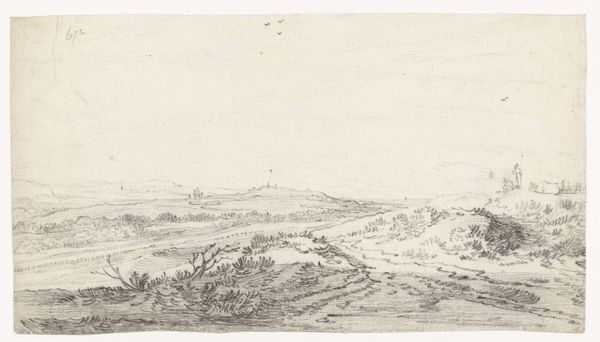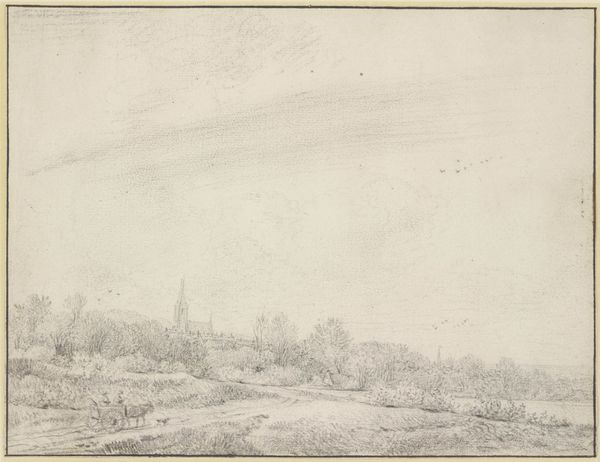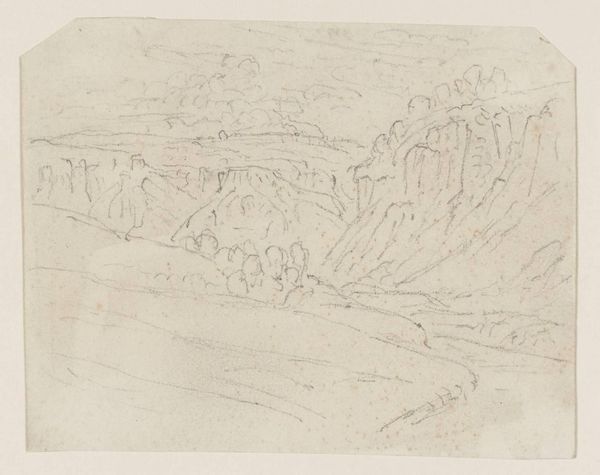
drawing, pencil
#
drawing
#
landscape
#
pencil
#
line
#
realism
Copyright: Rijks Museum: Open Domain
Curator: Here we have a drawing by Andreas Schelfhout, titled "Heuvellandschap met bomen en struiken," or "Hills with trees and shrubs," created around 1811. It’s rendered in pencil, a quick study perhaps. Editor: There's an understated charm, almost fragile, to this sketch. A kind of romantic longing permeates it, don’t you think? It has a muted intimacy, as if we're eavesdropping on a private moment. Curator: It is a beautifully observed landscape. We have to consider the historical moment though; early 19th-century landscape art was emerging as a significant expression of national identity and Romantic ideals. Schelfhout was working within a very specific tradition. Editor: And landscape in the early 19th century reflected much of the Romantic era ideals, even national anxieties. Was this pristine natural world under threat? Is the lightness of touch indicative of fragility, or an assertion of resilience in a landscape, post-Enlightenment? Curator: Precisely! Also, while the technique appears simple, its cultural importance as both national and artistic territory is key here, and connects him to the later Hague School. Artists were grappling with how to represent the landscape, what to foreground and omit, and crucially for whom. This image can also be interpreted through lens of colonialism, what were its links to concepts of ownership and extraction? Editor: Good points. It invites us to contemplate the loaded relationship between human representation, natural resources and the ownership, but does that initial simplicity and romantic notion, help to cover the underlying ideology of natural dominance, where it serves a predominantly male, and potentially exploitative gaze? I read a real tension into that choice of perspective, the lightness is almost subversive. Curator: And that subversive lightness makes this seemingly simple study a fertile ground for socio-political readings of both his artistic practice, and how notions of national identity, or the dominant class and gender within it, become projected through seemingly bucolic scenes. Thank you. Editor: It highlights so clearly that these idyllic landscapes weren’t just about aesthetic beauty but very much loaded political constructs.
Comments
No comments
Be the first to comment and join the conversation on the ultimate creative platform.
